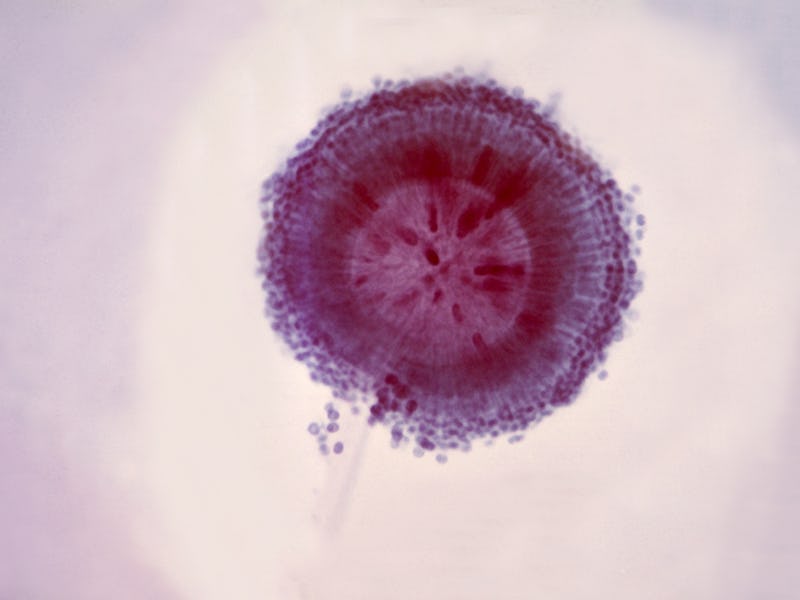NASA's Moon mission could finally reveal what space does to human DNA
Plus: Furniture that assembles itself.

As humans prepare to take longer (and farther) trips into space, it’s crucial for scientists to learn how precisely these extended voyages affect our bodies.
More specifically, researchers want to see how human DNA reacts to heightened radiation in space. When NASA eventually sends humans to the moon again — likely on an Artemis mission in 2026 — they will experience 200 times the amount of radiation we encounter on the Earth’s surface, not to mention microgravity.
While the Artemis I mission (which was scrubbed this morning) will not feature a human crew, the payload will include some living creatures that could help predict how lunar astronauts will fare, according to the U.S. Naval Research Laboratory (NRL).
What’s new — When the Orion spacecraft takes off, fungi will hitch a ride to the moon along with it. For this experiment, the NRL scientists chose to include a fungus called Aspergillus niger, which commonly contaminates food and can cause pneumonia.
Four different strains of A. niger will soon blast into space, including one wild variety and three that were engineered in the lab.
Researchers tweaked the fungi for specific purposes: They messed with DNA repair mechanisms in two strains, and another strain now can’t produce melanin. These adjustments could show how these two processes work in space, and what happens to fungi in their absence. Ultimately, the project could allow for more accurate predictions of how our genetic material may transform in transit and on the moon.
The fungi rendered here will be sent to the moon on the upcoming Artemis I mission to help predict how human DNA will change in space, and it could even help create novel treatments for future missions.
Fungal finds — The brave fungi could also help us better protect people and equipment when they leave Earth. They may produce unique molecules that help them survive in space, so scientists could harness these substances to create treatments for future missions. After Artemis I ends, the samples will be processed in the NRL lab so that scientists can closely inspect how the fungi fared.
This experiment isn’t the only effort to shoot fungi into the expanse. The government will also send samples to the International Space Station and to Mars-like conditions in the stratosphere via NASA’s Antarctic balloon.
“These three programs will give us a full picture of how eukaryotes like fungi perform in diverse space conditions,” NRL microbiologist Zheng Wang said in a press release. “Then in the future, we can develop better strategies to help astronauts explore deep space.”
On the horizon ...
This disc printed by Kam’s team, which looks a bit like a Pringle, was meticulously engineered to curve in a specific direction.
Imagine that you ordered an ornate oak desk online, but when the package arrives it’s surprisingly light. After you rip it open, you find a flat piece of wood with wet ink on it (which kind of resembles maple fudge). But after the ink dries, the wood miraculously morphs into the item you ordered online.
This scenario isn’t possible. Yet. But it’s the goal for Doron Kam, a materials science PhD student at the Hebrew University of Jerusalem in Israel who recently presented his work with colleagues at the fall American Chemical Society meeting.
Kam’s proposed printing technique creates wooden objects that can transform on their own thanks to what seems like magic — but in reality, took meticulous planning and a high-tech 3D printer.
The futuristic concept takes advantage of warping, a natural occurrence in wood that’s usually dreaded by designers and homeowners alike. Wood gets wet and dries unevenly, creating some funky shapes, and nobody wants a creaky, sagging floor or oddly curved dresser. But Kam and his colleagues use this phenomenon to their advantage.
Kam and his fellow researchers found a way to print flat wood sheets that form 3D shapes when prompted by a certain stimulus, such as a change in pH, temperature, or moisture. Ultimately, the technique is intended for more than just tables and chairs, Kam explains, and could be used in a variety of fields.
“If we invest enough time and resources, [this method] can produce really interesting and valuable products,” he says. “The way that we’re showing it is just by woodworking.”
Read the full story to find out more.
Here’s what else we’re reading...
- Governments around the world are shutting down the internet. The strategy is increasingly used to control dissent, according to The Guardian.
- California aims to triple EV sales by 2026. USA Today has the details.
- Scientists want to digitize the DNA of every known species on Earth. CBS News has a snapshot.
- The first private Venus mission will be quick. Rocket Lab’s low-cost venture will get the job done in just five minutes, MIT Technology Review reports.
- The Texas crypto-mining rush may require as much power as the state of New York. Bloomberg digs in.
This has been HORIZONS, a newsletter that explores the innovations of today shaping the world of tomorrow. Subscribe for free.